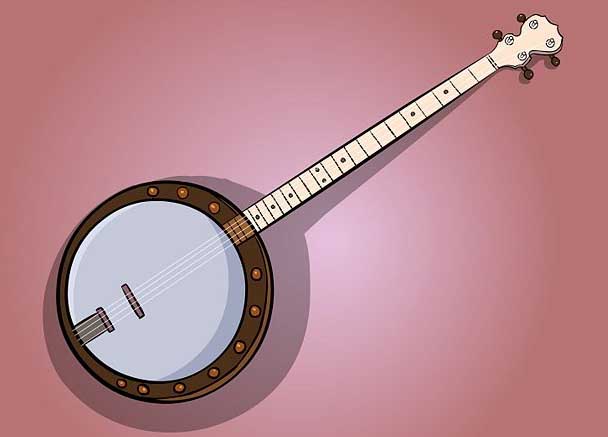
Choose the number of
strings. Banjos are a versatile instrument available in multiple
flavors. Among the string-options for banjos are a 4-string,
5-string, or 6-string. Choose which one fits you best based
on the style of music you are interested in playing and how
advanced of a player you consider yourself.
The 4-string or tenor
banjo is often associated with dixieland/jazz or Irish music.
You can certainly play more than just these styles on a 4-string
though. They offer a great choice for beginners, because of
the simplicity of the instrument.
The 5-string banjo is the most popular, and most traditional,
of all the banjo styles. It is most closely associated with
bluegrass and folk styles of banjo-playing, but can be used
to play most styles of music. The 5-string banjo is known
for its odd fifth string which attaches near the halfway point
of neck, a characteristic it inherited from its African predecessors.
This is the best option for beginning banjo players, as it
offers ease with an extended range of available notes.[1]
The 6-string banjo, or guitar-banjo, is the least popular
of the three styles, but is well-used among famous banjo-players.
It offers the widest range of notes but is also the most difficult
to play, making it a poor choice for first-time students.
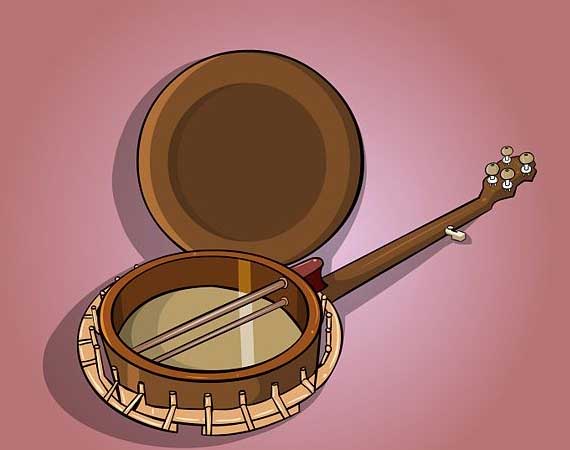
Decide on an open-back
or resonator banjo. Banjos come in two main builds, either
with an open-back or a resonator attached. The open-back banjo
is exactly as it sounds: the drum like cover of the banjo
has no back, so it makes a bowl-shape when upside down. A
resonator banjo has an attached back and ring of wood which
amplifies the sound.
It is best to make
the decision on which build of banjo you want after playing
both at a local music store. They each offer slightly different
sounds because of their construction.
Open-back banjos are most often used by beginners, as they
are typically the cheapest option and don’t need to
be too loud. If you want to play in a band, however, an open-back
banjo may not be the best choice.
Banjos with a resonator produce a louder, fuller sound, but
are much more expensive. If you are ready and willing to commit
to playing the banjo for a long time, then invest in a resonator
banjo.
It is said that the heavier a banjo is, the better the quality
of the instrument. However, don’t let that deter you
from selecting a banjo that might be lighter.
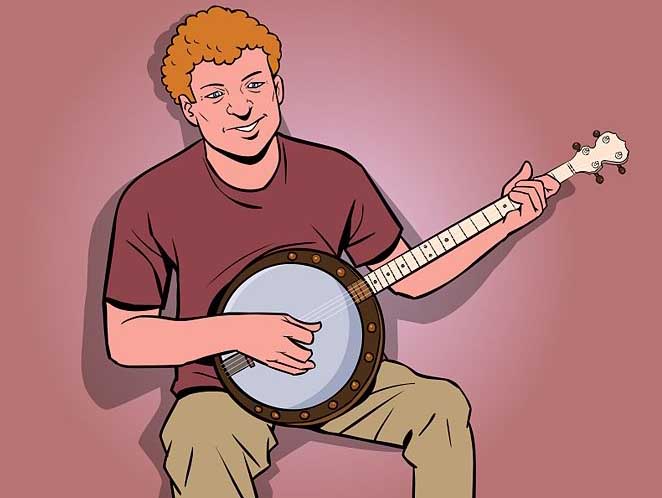
Find the best action
and scale for you. The action of the banjo is the distance
of the strings to the fingerboard, while the scale is the
total length of the strings from the nut to the bridge.
Choose a banjo with
a low action to make playing easier. If the action is too
high, you will have to press down on the strings which can
push the notes out of tune and put uncomfortable pressure
on your fingers.
The scale on a banjo can range anywhere from 23”-32”,
but the easiest one for beginners to start on is the 26 ¼”
banjo. This is neither overwhelmingly long or uncomfortably
short, but sits happily in the middle.
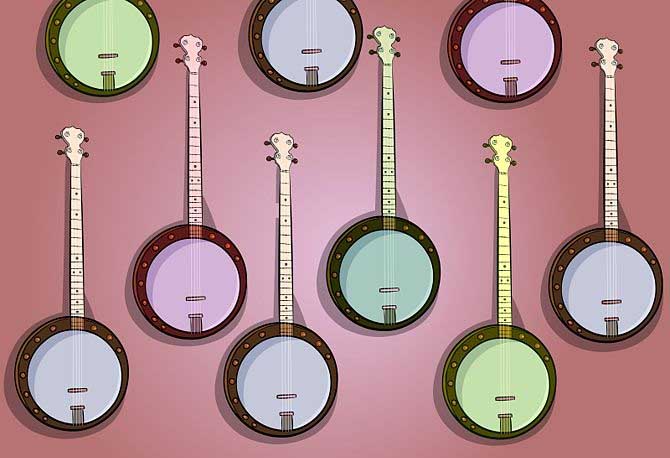
Consider other styles.
Although the aforementioned items are important to consider
when you are looking into buying a banjo, there are a few
more options to contemplate. You may consider purchasing a
plectrum banjo, which is played with a special pick, or possibly
a banjo with a tone ring which enhances the sound. Meet with
a local banjo enthusiast or employee at your favorite music
store to find out which style fits your preferences.
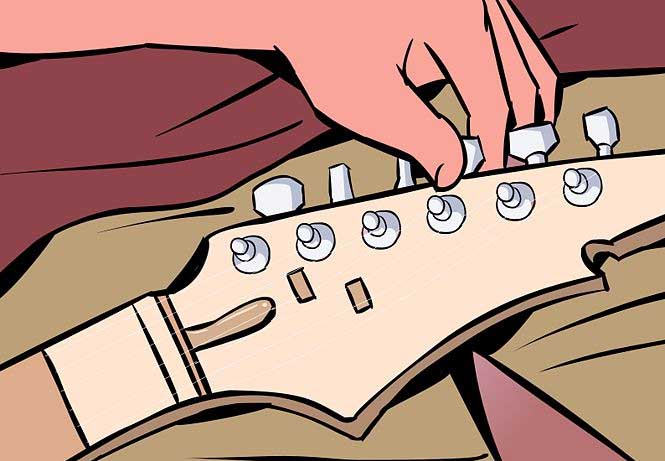
Tune your banjo. Before
you can begin to play the banjo, you need to make sure it
is in tune. Twisting the tuner knobs at the headstock of the
banjo changes the length and tension of the string, which
alters the sound (the tighter and shorter the string, the
higher the pitch, and vice versa).
Use an electric tuner.
Banjos require a chromatic tuner, but these are easy to order
online or purchase from a local music supply store.
If you have a piano or keyboard, play the key on the piano
of the string you are tuning and twist the tuner counter clockwise
if it is flat, and clockwise if it is sharp. This might be
more difficult for beginners as you are essentially playing
by ear, but it can help you to know what sound the banjo should
make when it is both in and out of tune.
For 5-string banjo: you should tune your banjo to Open G (G,D,G,B,D).
For tenor banjo: you should tune your banjo to GDAE or CGDA.
For plectrum banjo: you should use CGBD
Use an online banjo tuner to hear what these sound like.
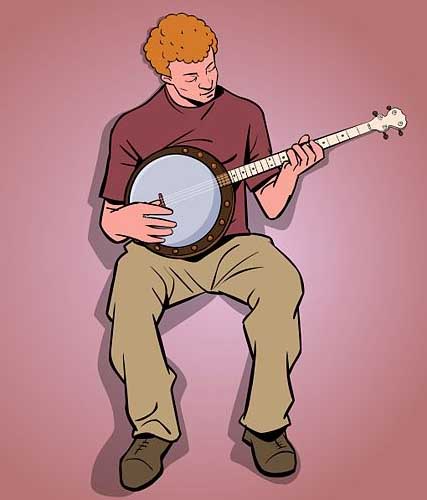
Adjust your body. It
is very important that you have the correct posture before
playing the banjo. Sitting in the wrong pose can greatly alter
the sound of your music, increase the difficulty, and make
it more likely that you will hurt yourself.
Always keep your shoulders
up and back, without slouching. This applies if you are sitting
or standing.
Hold the banjo at a 45 degree angle, with the bottom-side
being perpendicular to the ground.
Be careful not to grip the neck too tight because unlike a
guitar, a banjo has a rather sensitive neck. Holding it too
tight can make your notes go out of tune.
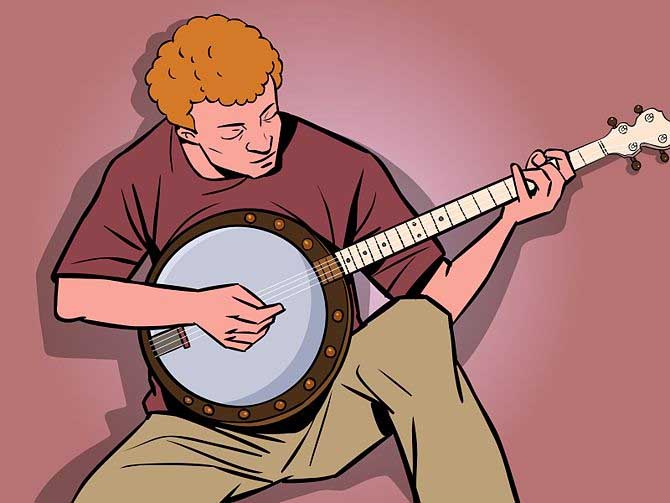
Get your hands in the
right place. Your right hand should be resting above the strings
near the bridge, while your left hand is holding the neck.
Your pinky and ring
finger on your right hand should be resting against the head
of the banjo, just past the first string. If you have difficulty
keeping them there while you play, try adding a piece of double-stick
tape to help hold your fingers in place.
The neck of the banjo should rest on your thumb. Keep your
thumb straight, and reach your remaining fingers around to
the fingerboard. To get the correct posture for your wrist,
put all four of your fingers on the first four frets touching
the back edge. Hold this position of your wrist while you
play
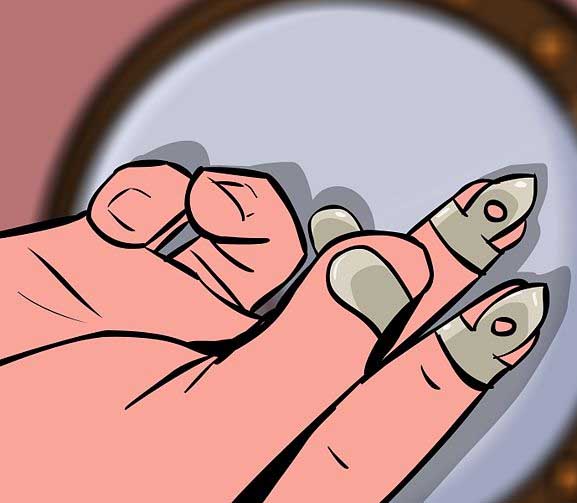
Learn how to pick. When
you pick at the strings, you sweep your finger downwards using
your nail to pick the strings. For a banjo, you will always
use your thumb, index, and middle finger for picking. Your
ring and pinky finger remain on the head of the banjo.
You can buy finger
picks to slide on the tips of your fingers. They are like
metal guitar picks with rings attached that you slide onto
the ends of your plucking fingers, and are responsible for
creating a louder sound.
Don’t worry about pulling or pushing the strings to
pick, as it is unnecessary. The banjo will create a good sound
just by softly hitting each string with a downwards stroke.
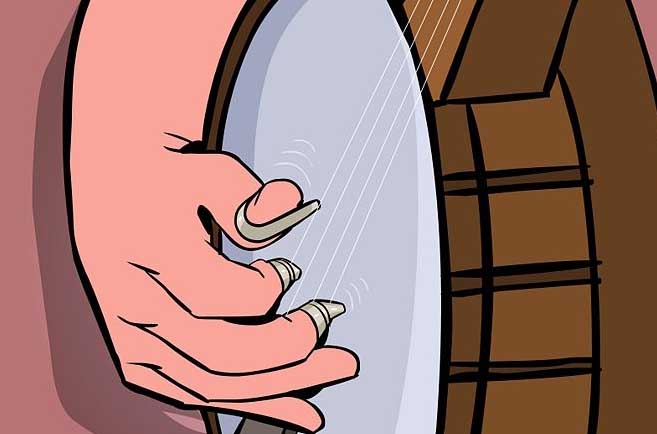
Learn some basic rolls.
Rolls are a term that describe a basic banjo-picking pattern
performed in eighth notes. There are many basic rolls to choose
from, and they all work by having only your right hand pick
at a few strings in a repetitive pattern.
A forward roll is the
most basic, and is played by hitting the strings in this order:
5-3-1-5-3-1-5-3. The numbers refer to the string: fifth string,
third string, and first string. You see that there are eight
notes to be played, so that the roll takes up exactly one
measure of music.
Once you have learned a basic roll, work your way up into
more difficult rolls to practice your picking and timing.
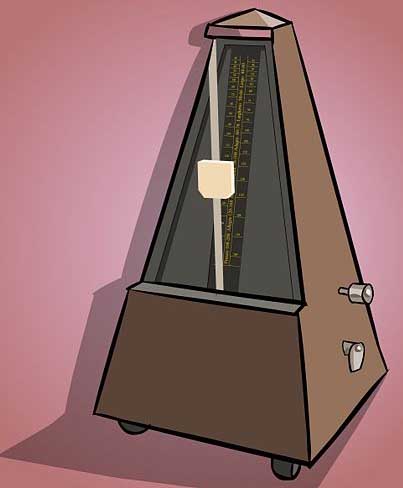
Practice your rhythm.
Although you might have some rolls down, keeping time while
playing them for an extended period can be very difficult.
Practice your timing by using a metronome. A metronome is
a gadget that emits electronic clicking noises at a certain,
consistent rate. Have one going while you practice so that
you can rate yourself based on the metronome’s timing.
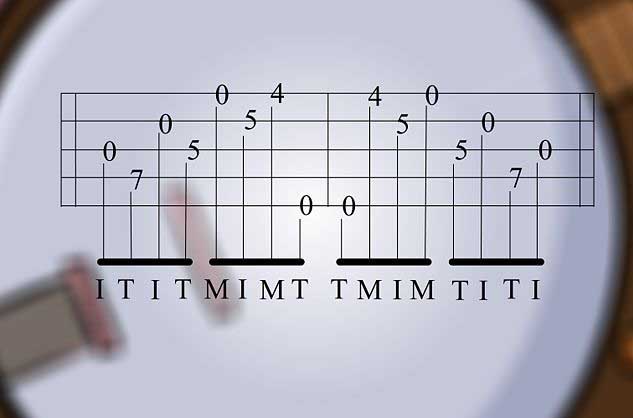
Learn more advanced
music. Once you feel you know several rolls, have your timing
and rhythm down, and are ready to move forward, look into
learning some songs. It may take a few weeks of practicing
before you play anything recognizable, but don’t let
that discourage you.
Look up famous banjo
songs online to learn how to play them. Many music books are
also available which teach you how to master some basic songs.
You can search for banjo tabs to get music for many popular
songs. A tab is like music for a banjo, telling you what string
number and fret creates the notes you need. Search the name
of your song with the word “tab” to get the music
for it.
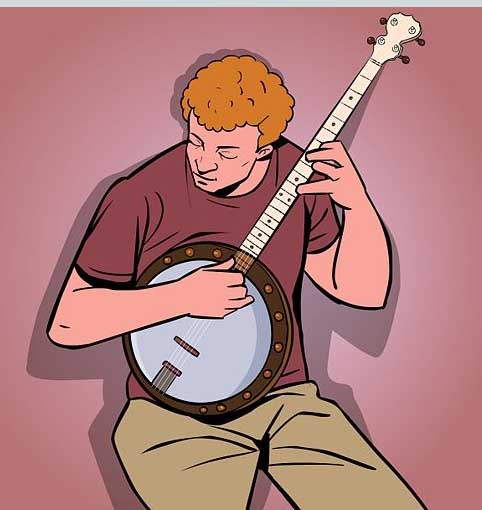
Practice daily. The
most important part of learning to play any instrument is
to put in regular effort. To become a good banjo player, it
is important that you spend at least thirty minutes a day
practicing your skill. It may be frustrating or discouraging
at first, but over time you will grow to love playing it on
a daily basis.